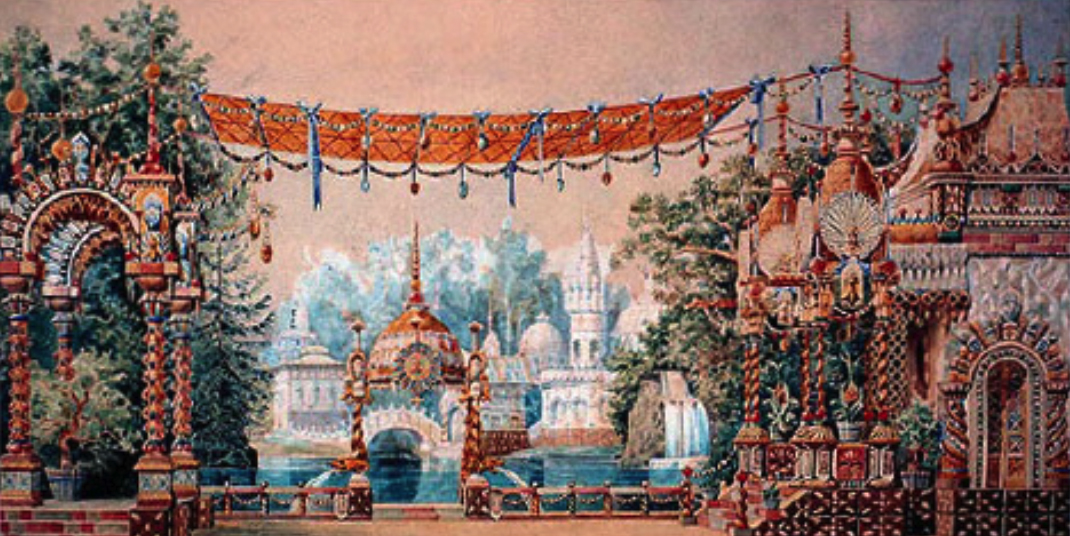
When we return after intermission we find ourselves transported to Konfituerenburg or the Land of the Sweets. Balanchine said, “When the curtain rises we are inside a huge box of candy!”
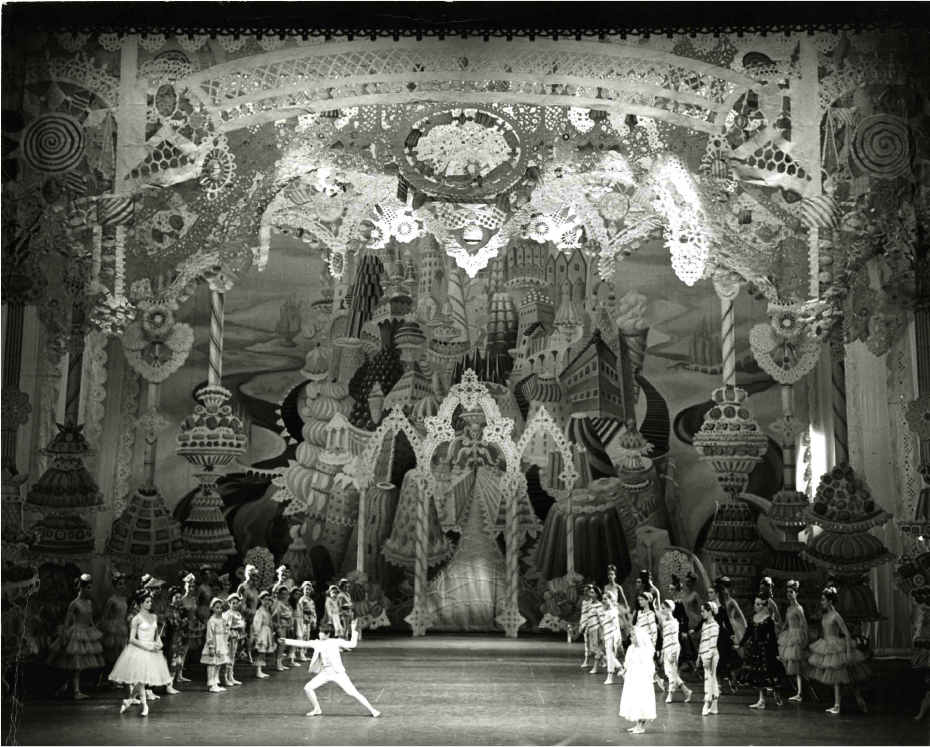
He drew on his childhood memories of Eliseyevsky’s, a grand sweet shop that Balanchine said was as opulent as a palace and filled with delicious treats from around the world. He remembered that the store had sawdust on the floor that silenced the children’s footsteps – an effect reminiscent of those quiet, tiny footsteps under long hoop skirts that make the angels seem to glide onstage in the beginning of Act II.
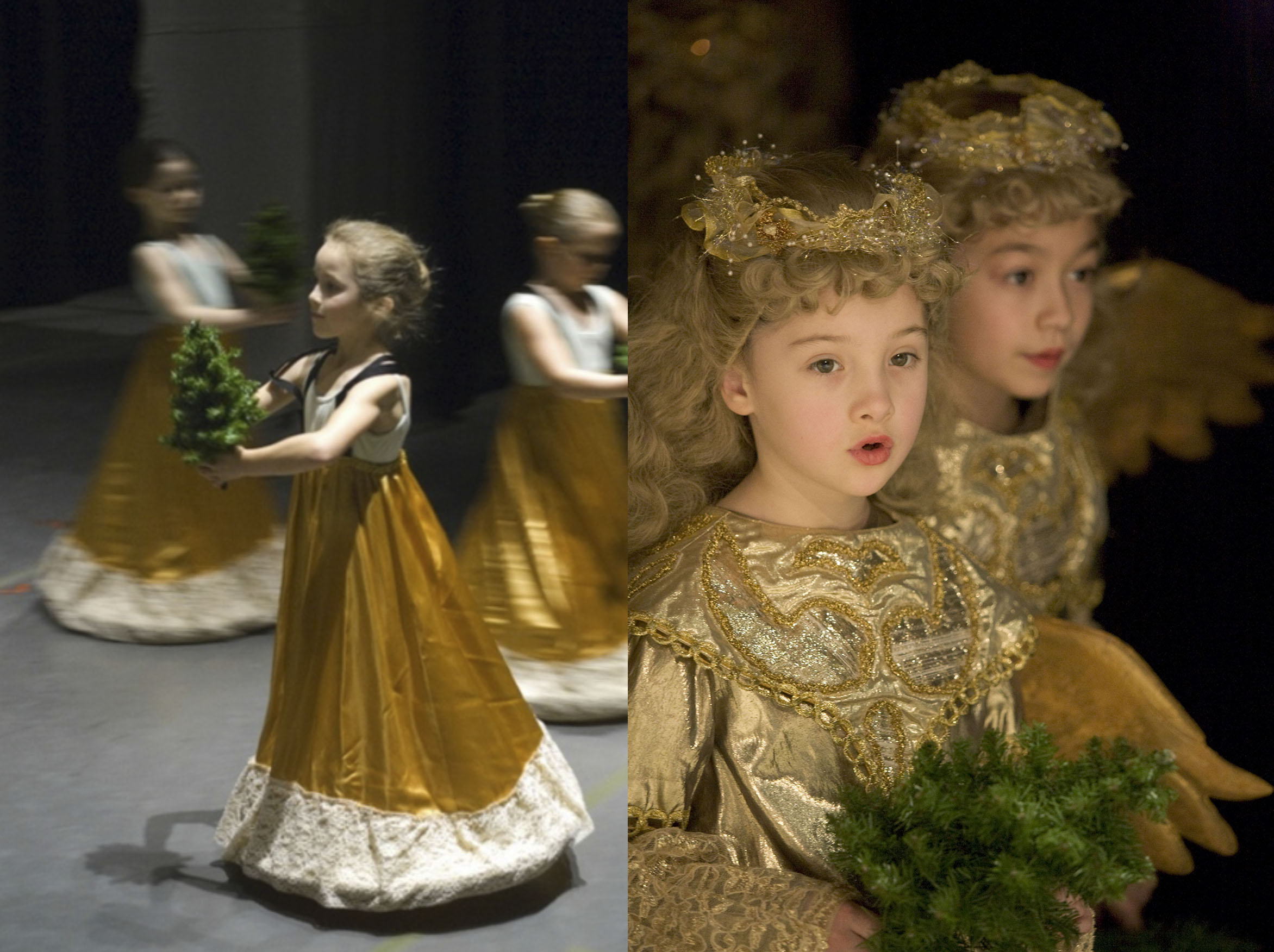
These are the students of the School of Oregon Ballet Theatre testing their wings onstage, some of them for the first time. (In OBT’s production of The Nutcracker there are 81 students who rotate through 65 children’s roles!)
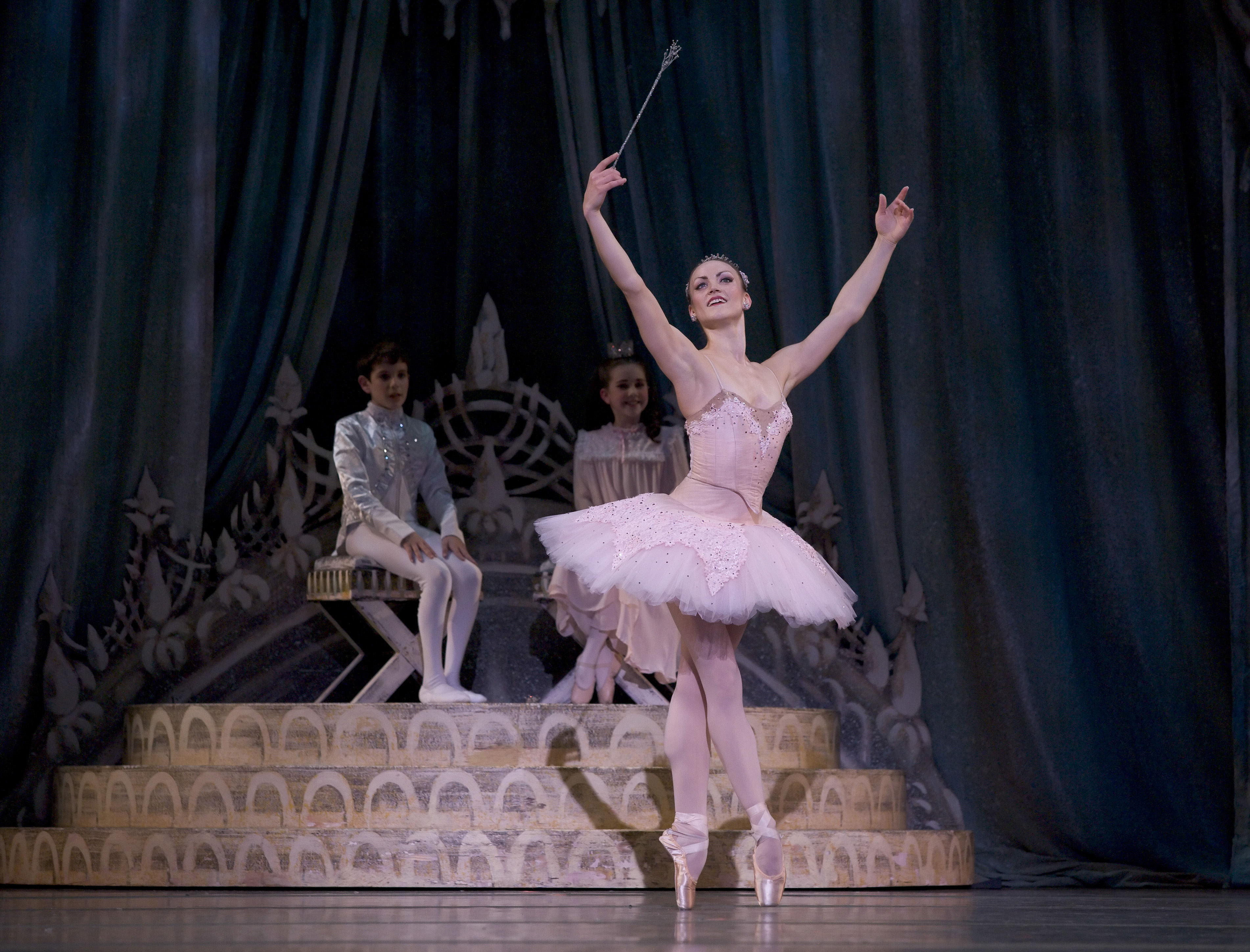
The Sugarplum Fairy, benevolent ruler of the Land of the Sweets, dances to the tinkling celesta, and the angels enclose her in what Balanchine described as a “semicircle of love.” Of the 162 costumes put to use in every performance of OBT’s The Nutcracker, two got special attention this year. The costume shop has been very busy, building two brand new Cavalier costumes and two sparkling new Sugar Plum Fairy costumes. Each Sugar Plum Fairy tutu takes three weeks to build and costs approximately $3,000 to complete. (The 12 layers of tulle required are condensed from a length of 165 yards, which means that if you unrolled all the tulle that goes into that one tutu and lined it up end-to-end, it would stretch the length of about 1-1/3 football fields!)
At the Sugarplum Fairy’s request, Marie and her prince tell the story of their journey before being rewarded with a candy throne and a parade of dancing sweets. The account takes place during the Prince’s mime scene – one of the longest in ballet today.
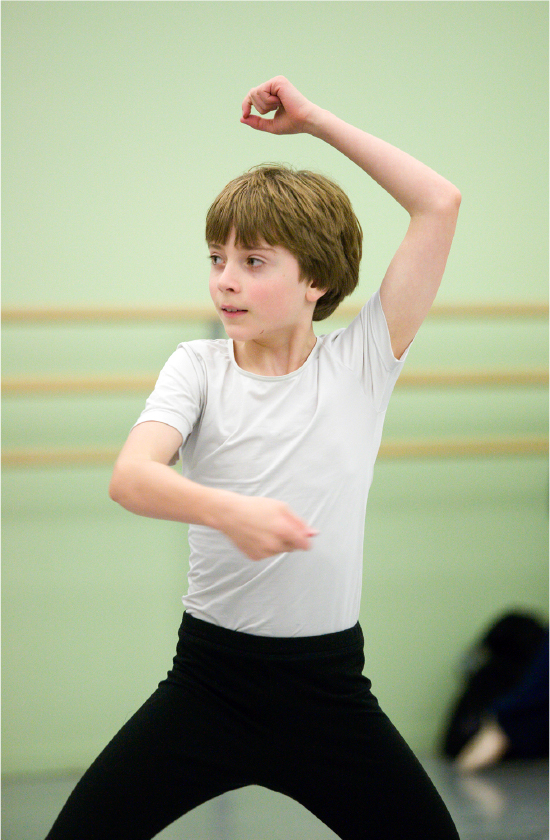
Through a system of sign language the Prince tells the story of the battle, giving Marie full credit. Balanchine performed this role as a child and claimed the choreography was true to the original 1892 production, so Lev Ivanov is credited for the choreography for this scene.

The Prince and Marie are rewarded for their bravery with a pageant of sweets that begins with Spanish Hot Chocolate. As an interesting aside, in this divertissement New York City Ballet’s costumes ensure that Balanchine makes a cameo appearance in each of their performances: The bodices of the corps de ballet include small, oval-shaped portraits of Balanchine.
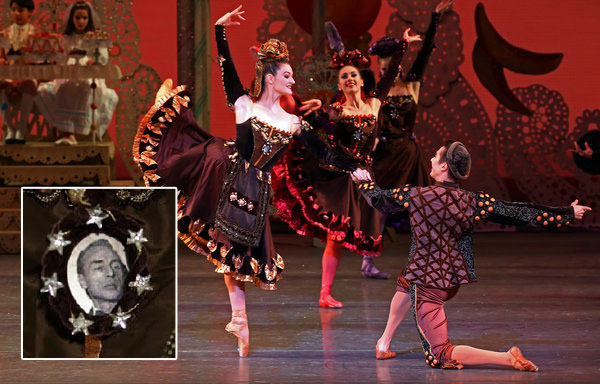
The soloists’ bodices are adorned with a small portrait of Lincoln Kirstein, co-founder with Balanchine of New York City Ballet. These decorations are small and not intended for the audience to see. They are included in the costumes for the benefit of the dancers, as a link to their past, and are unique to the costumes at New York City Ballet.
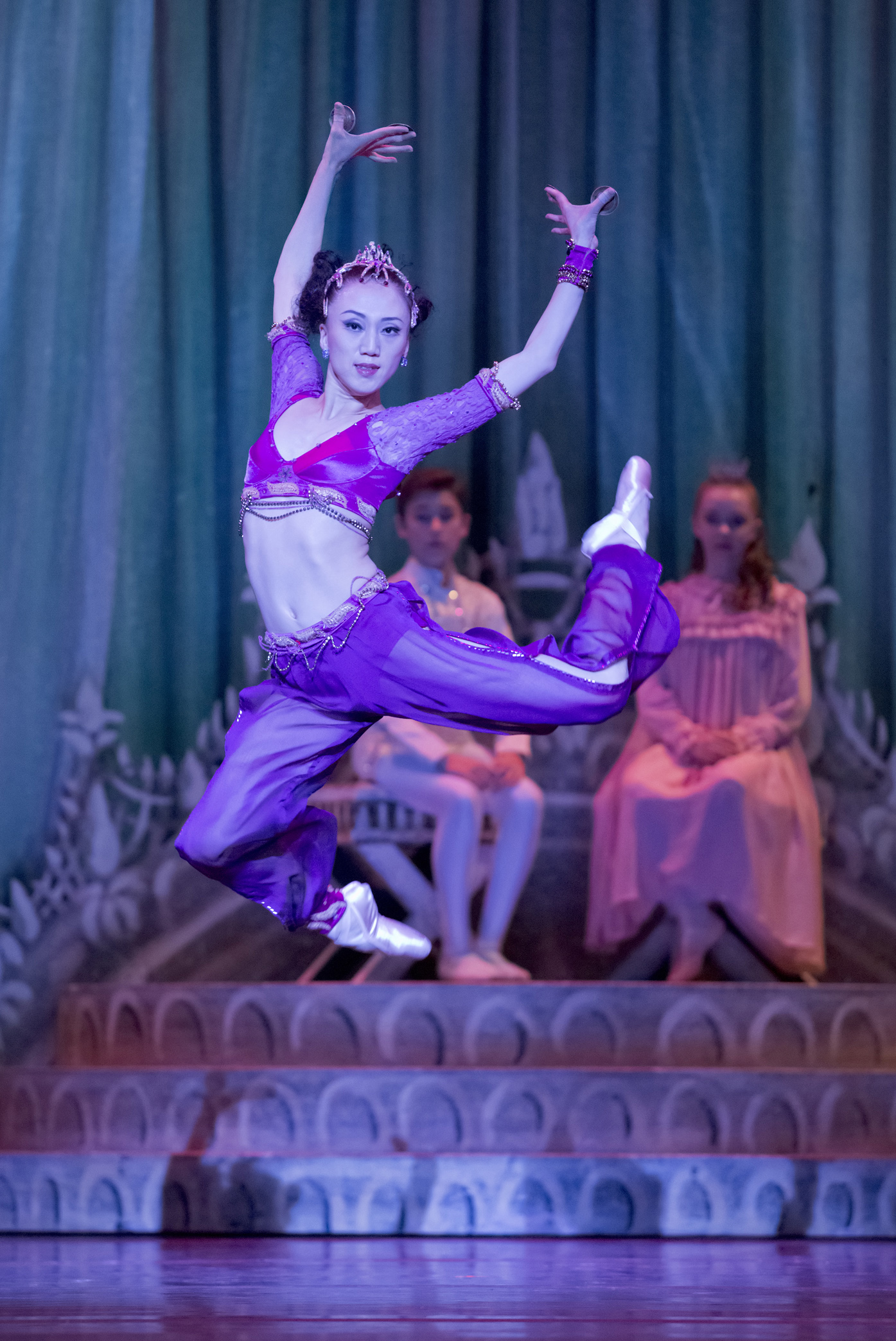
Next is Arabian Coffee, which is danced to a melody that’s not Arabian at all, but rather a Georgian lullaby. The score is reminiscent of a snake charmer’s sound, and this divertissement formerly featured a hookah-smoking nobleman to be fanned by 4 parrots, but was re-choreographed as a solo for a woman.
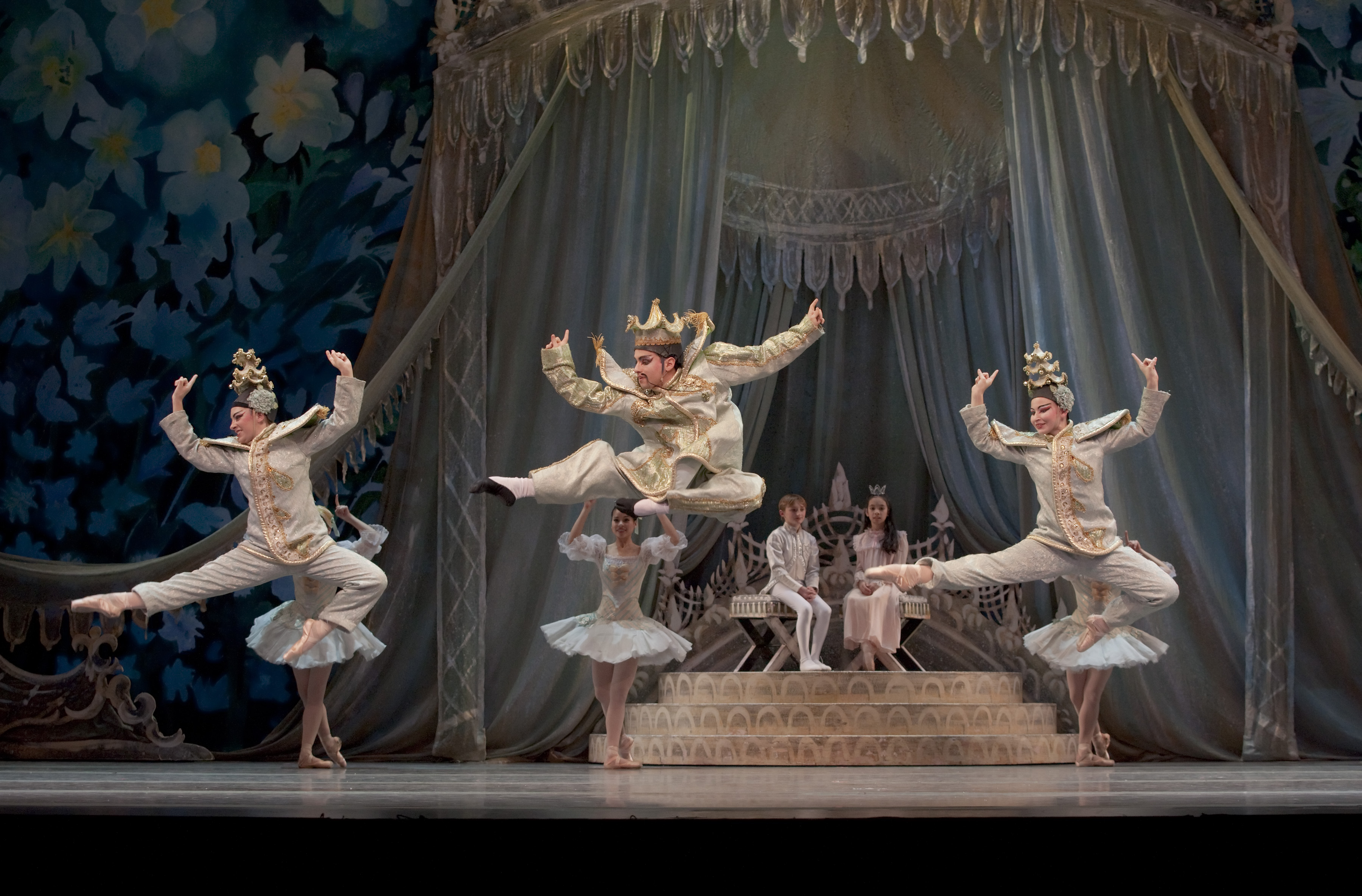
Photo by Blaine Truitt Covert.
The parade of sweets continues with Chinese Tea, a divertissement that features explosive jumps and turns. (Watch for those fantastic jumps into the side splits.)
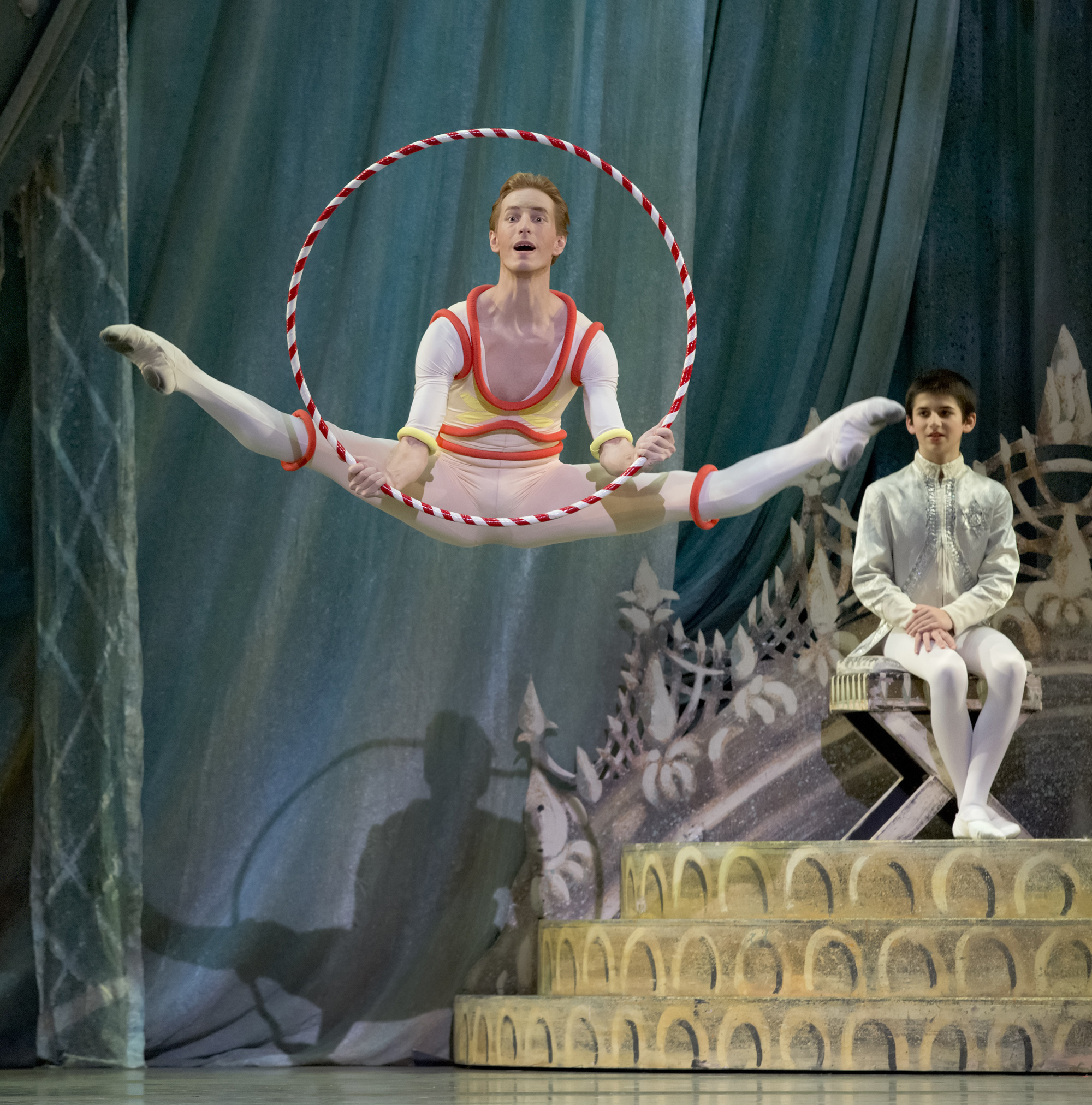
This is followed by an ensemble of dancing Candy Canes, who execute hoop acrobatics that were called for in the original 1892 production. (Keep an eye out for the soloist’s consecutive jumps through a hoop, with a turn in between each, ending with an impressive double jump that lands right on the music.)
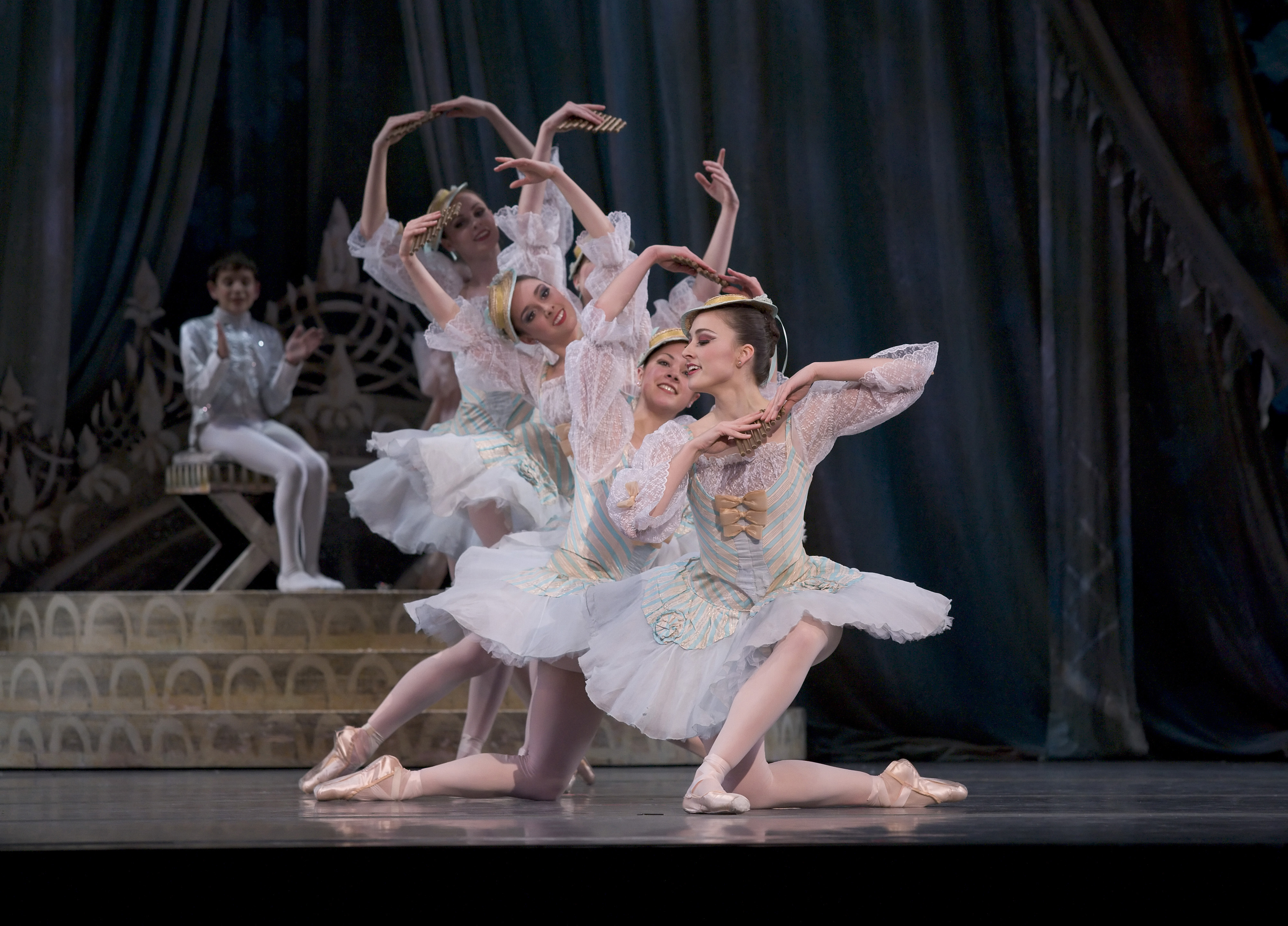
Balanchine also felt free to stray from the 1892 version of the ballet, as he did with the Marzipan Shepherdesses or Mirlitons. For this flute-miming ensemble Balanchine took a jumping step called the gargouillade, in which the dancer traces rings in the air with her feet, from the Sugarplum Fairy’s original choreography and gave it to the lead shepherdess.
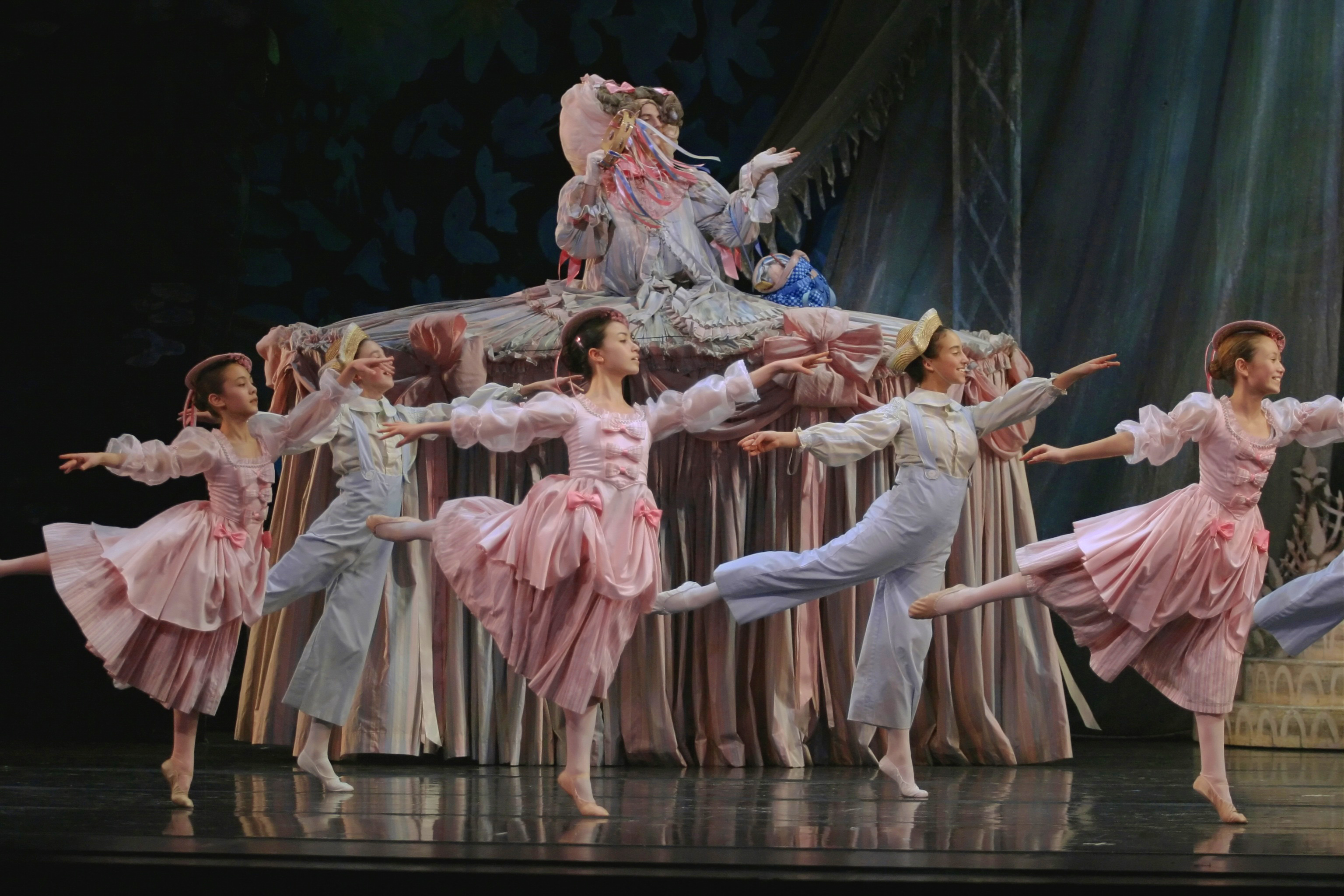
Next is Mother Ginger, a role traditionally played by a man, and her Polichinelles, the children that emerge from her enormous skirt. The skirt and the frame for the skirt are so large that they live backstage with the set pieces, and to get Mother Ginger into full costume requires the assistance of three people. During this divertissement Mother Ginger pulls on a cord, and like a theatre curtain, her skirt opens and closes for the children’s entrances and exits.
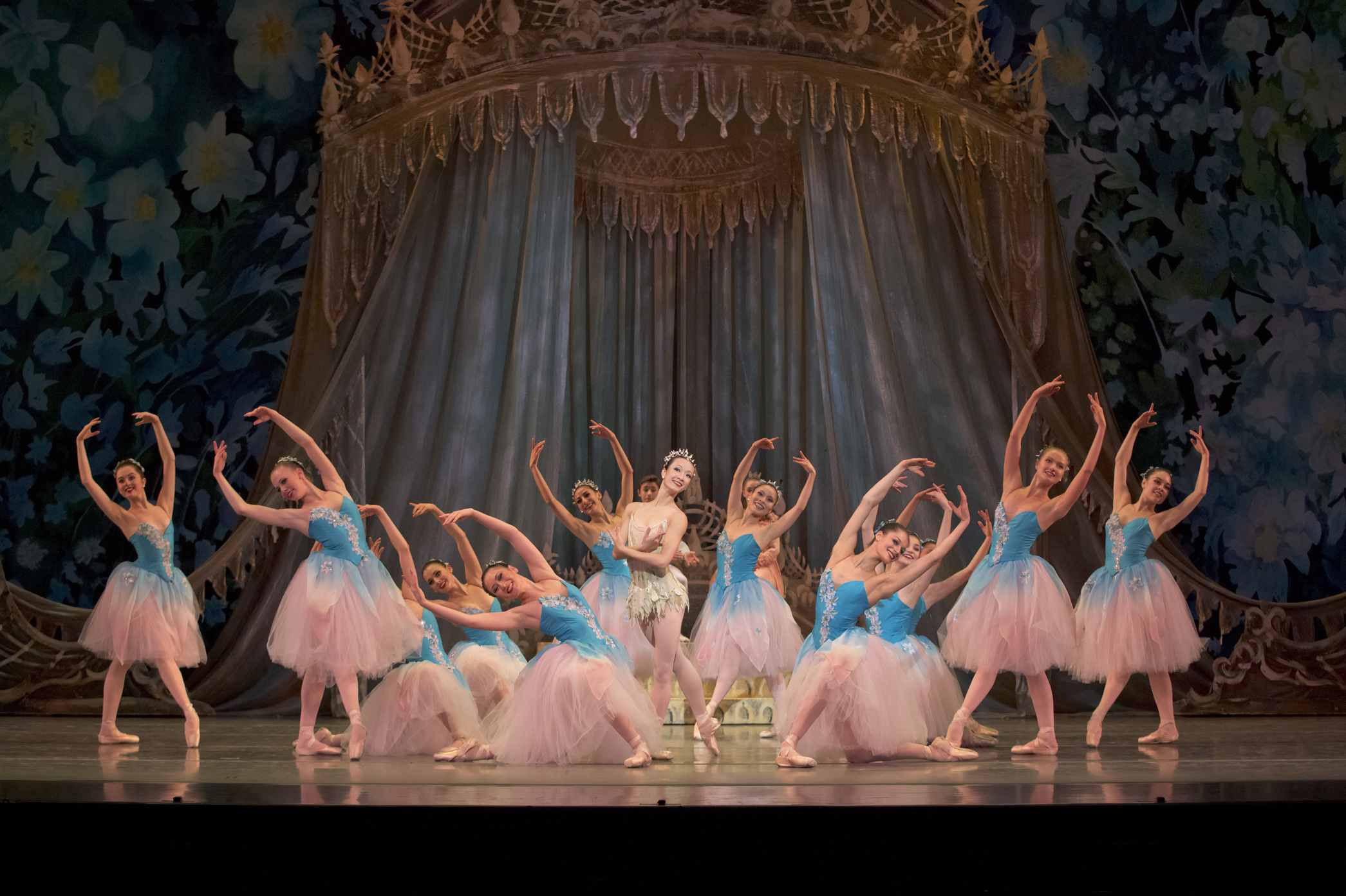
The Waltz of the Flowers follows with formations blossoming onstage and the woodwinds suggesting gentle breezes. Dewdrop, a virtuoso role, dances among the blooms, celebrating her role with sustained balances and leaps.
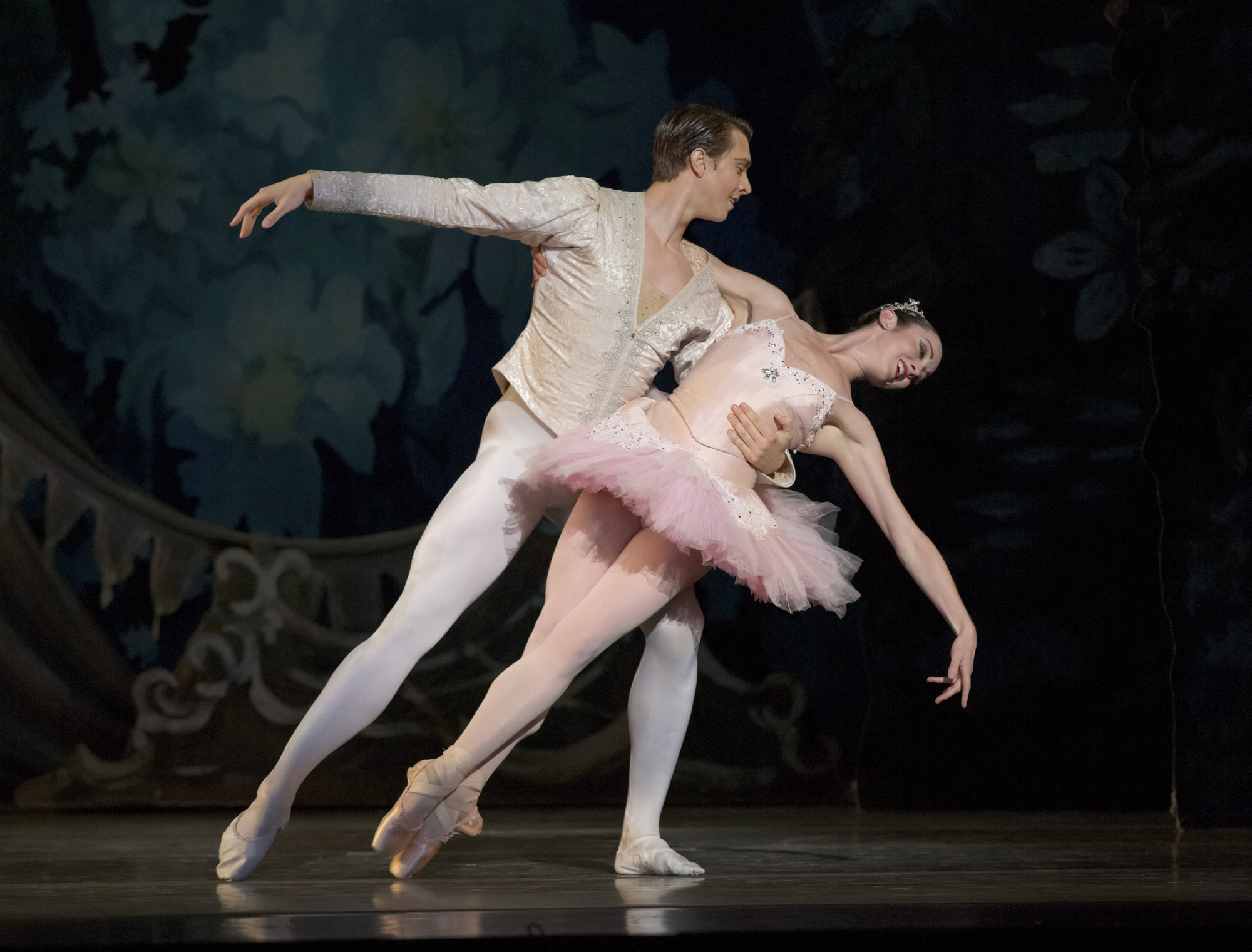
At last we come to the Grand Pas de Deux for the Sugarplum Fairy and, in 1892, a character named Prince Coqueluche, which means whooping cough, so presumably his character was to be like a lozenge or cough drop.
For his production Balanchine changed his character to a Cavalier, who supports the Sugar Plum Fairy tenderly and assuredly to Tchaikovsky’s swelling score. It is a conversation wherein she feels free to be as musically expressive as she likes. At the same time it is a physically demanding lesson in poise and beauty, and through her serene architecture she establishes her rule over her kingdom.
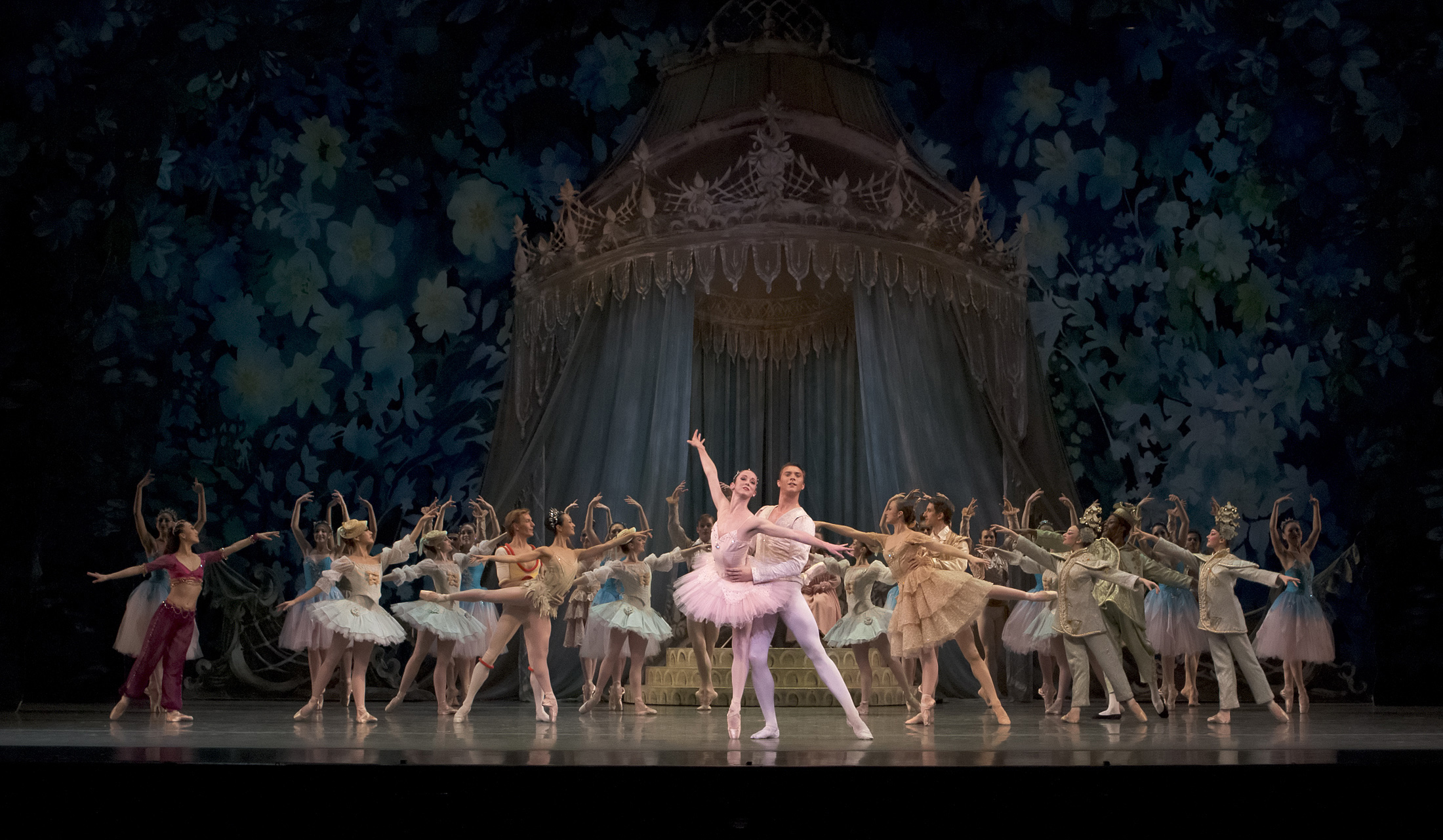
In conclusion all the delicacies return once more, and in 1892 the final stage picture was that of a golden beehive swollen with honey. Flying bees, played by eight students from the Imperial Theatre School, swarmed around the stage to protect their treasure. In Balanchine’s version, the delicacies bid farewell to Marie and her Prince as they journey back home, perhaps to dream another Nutcracker dream.
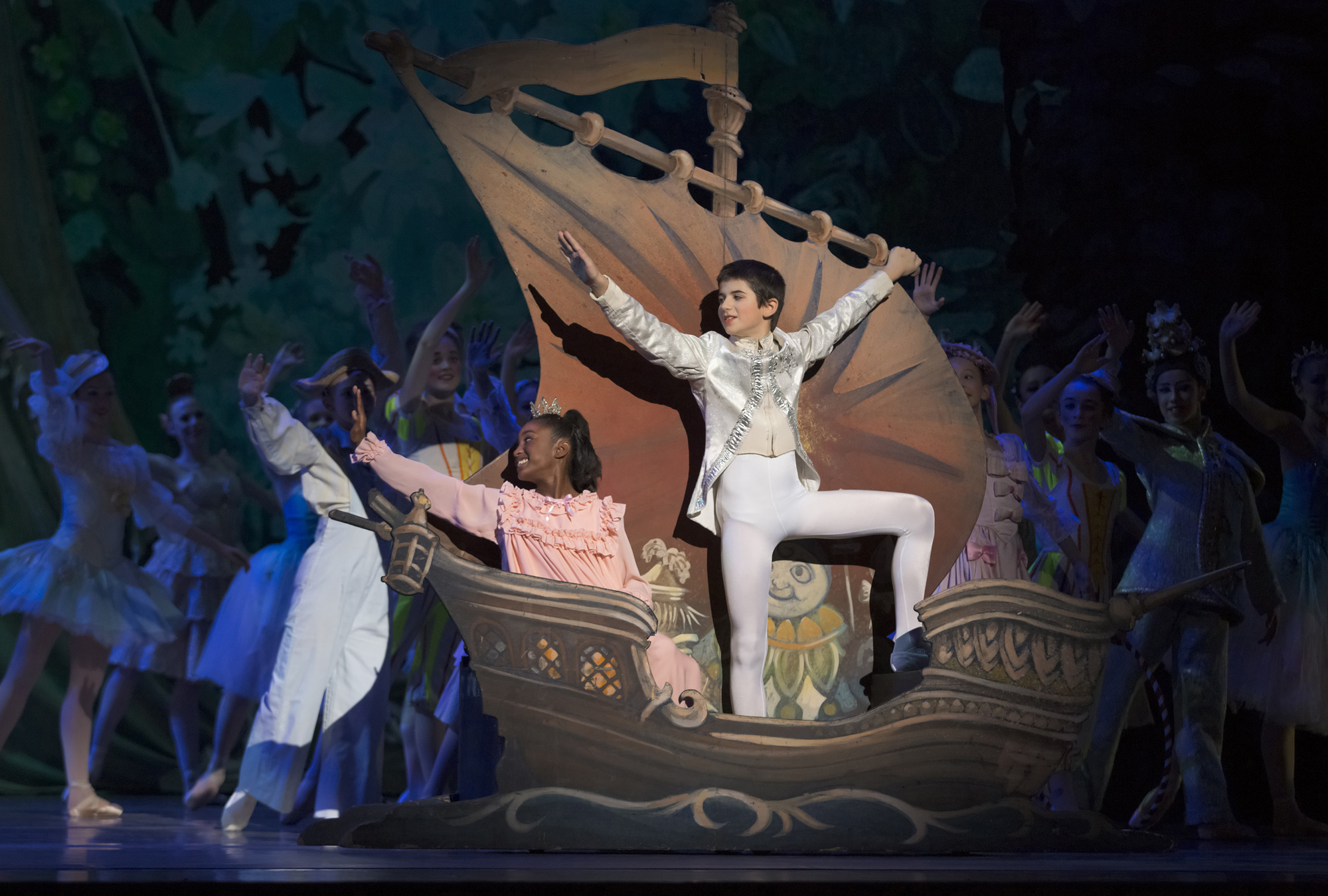
Three years after Balanchine’s version of The Nutcracker premiered onstage at City Center it was telecast by CBS into living rooms across America, with Balanchine himself playing Drosselmeyer. From there the Nutcracker phenomenon took off across America.

It has been, and continues to be, adapted to fit an array of cultural contexts particular to whatever community is producing it. Recent estimates count over 800 Nutcracker productions being performed worldwide with well over 300 of them being produced in America.
Oregon Ballet Theatre remains the only company west of the Mississippi who is licensed to perform George Balanchine’s version of The Nutcracker. This speaks to the level of excellence both at OBT and within the School of Oregon Ballet Theatre. Come and experience the wonder this season with OBT!
